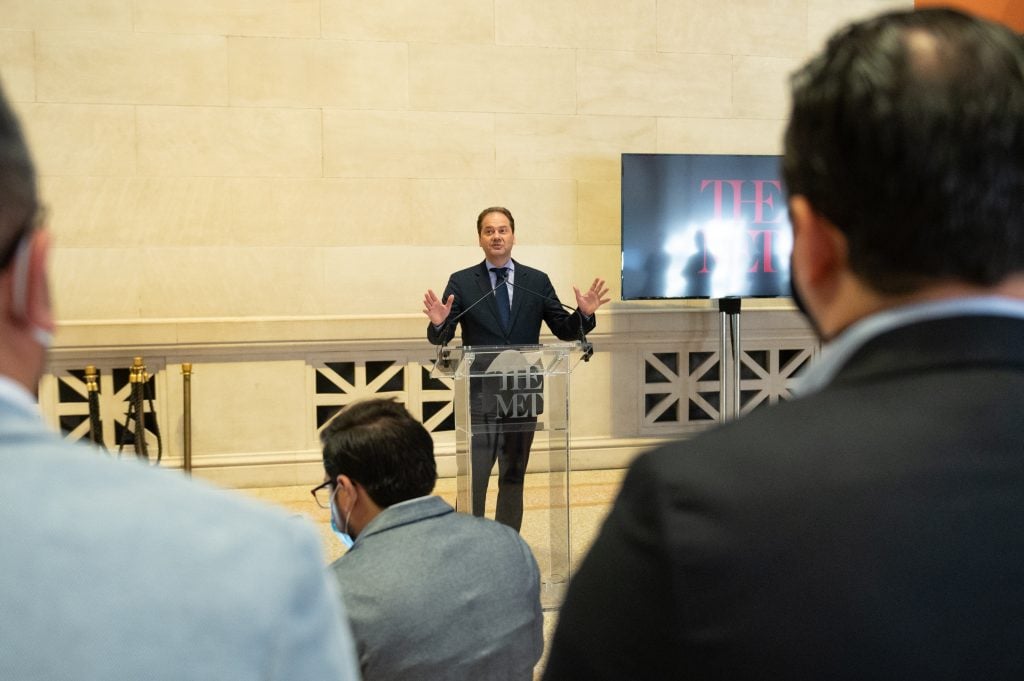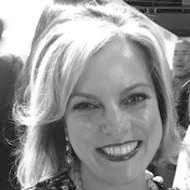The Art Detective is a weekly column by Katya Kazakina for Artnet News Pro that lifts the curtain on what’s really going on in the art market.
The 12-foot-tall statue of Athena Parthenos has been a silent witness at the entrance of the Metropolitan Museum of Art in New York for the past five years. It greeted millions of visitors in the Great Hall, waited for them to return during months of mandatory lockdowns, and welcomed them back when the museum reopened a year ago.
This week, the marble goddess of wisdom from 170 B.C. was dismantled in order to be sent back home to the Pergamon Museum in Berlin, Germany. In her place, two ancient Maya stone monuments, known as stelae, were erected. Lent by the Republic of Guatemala, they are life-size replicas of the ancient indigenous American rulers K’inich Yo’nal Ahk II and Queen Ix Wak Jalam Chan (Lady Six Sky).
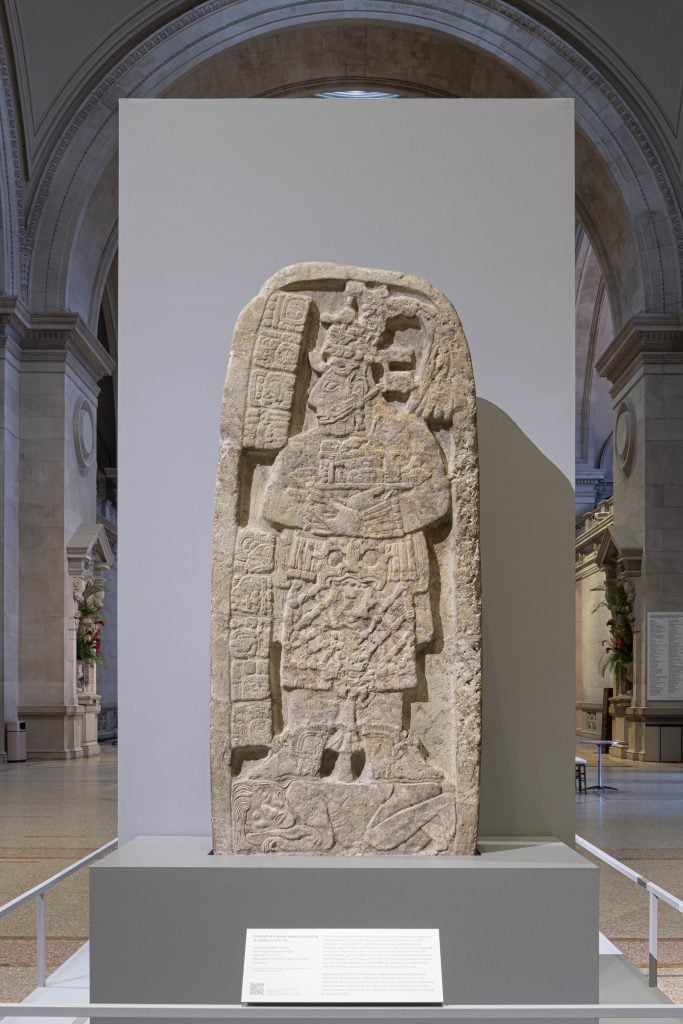
A newly installed Maya stone monument at the Metropolitan Museum of Art. © Metropolitan Museum of Art 2021, photography Wilson Santiago.
At a press conference on September 2, Max Hollein, the Met’s director, shared the spotlight with Guatemala’s minister of culture and sports. Hollein, 52, an Austrian art historian who has been at the helm of America’s largest museum since 2018, spoke of the privilege to share “these treasures with the thousands of visitors who walk through the museum’s door every day.” He invited New Yorkers “who come from the region to connect with the rich histories” and evoked “the greatness achieved by ancient Indigenous artists.”
The Met’s leadership says that the 8th-century limestone monuments—one 6.5 feet tall, the other, 9 feet tall—represent a broader transformation that’s been happening at the museum in recent years. There have been challenges, too, from a spate of high-profile curatorial departures to a $150 million revenue shortfall that the museum plans to address in part through controversial deaccessioning. (That process is progressing, we reveal, with the help of a high-profile market figure).
Earlier this week, I caught up with Hollein to take stock of the past 18 months and what is in store for the nation’s most closely watched art institution.
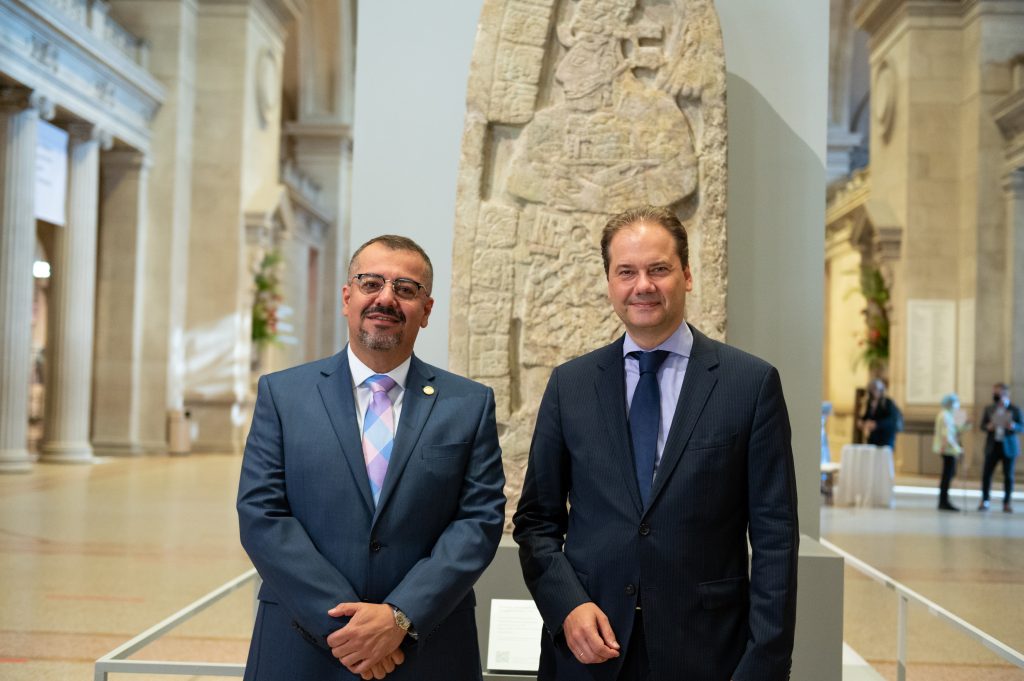
Felipe Aguilar, Guatemala’s Minister of Culture and Sports, at left, and Max Hollein. © Metropolitan Museum of Art 2021, photography Wilson Santiago.
Athena is gone and Lady Six Sky has entered the Great Hall. What was the impetus to replace the Greek goddess with an ancient Maya queen?
Athena was a loan from Berlin, and it needed to go back at some point, so we felt now was the time to make that change. It was important for us to show in the Great Hall not only the Greek and Roman manifestation as a birthplace of culture, but also Mesoamerica.
The two stelae are, in a sense, great signals and ambassadors for what is happening at the Met in the next couple of years. There’s a major show that we are preparing on Mayan culture, but maybe more importantly, the transformation and complete renewal of the Rockefeller wing, which holds very important collections of objects from Mesoamerica.
With the ongoing reckoning over race and inequality, what’s the role of an encyclopedic museum such as the Met?
This is a major topic for us. The Met, like any other museum of a similar size or scope, has history embedded in the institution. We saw in the last 18 months, through Black Lives Matter, a new reckoning with history in America, in a way that probably America, in that context, has not experienced before. And we have to be part of that by scrutinizing our own history, our own institutional biases. If you come to the museum right now, we have re-installed the mezzanine floor that we use for the contemporary collection. You will see recent acquisitions from the last probably three years; there’s a significant diversity of artists, with a significant number of Black artists represented. It’s been a priority for the institution.
Beyond programming, there’s the question of how we make sure that the institution as a whole can become more diverse and welcoming. That means whom we hire, what kind of positions we develop. In the curatorial area, we hired our first curator for Indigenous art. We established a position of chief diversity officer.
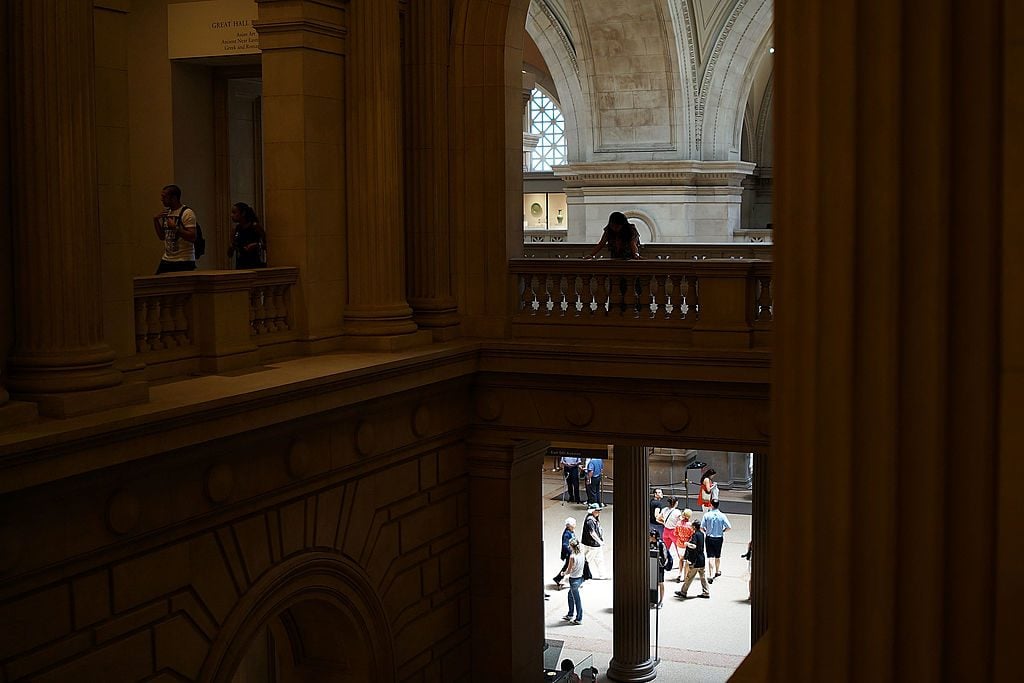
People walk through galleries at the Metropolitan Museum of Art. (Photo by Spencer Platt/Getty Images)
The Met has now been open for a year at reduced capacity. How has the pandemic affected your programming?
When we were able to reopen, it was important for us to create an environment where our visitors feel safe, where our staff feels safe, but also to provide a very welcoming and decisive experience, especially for the New Yorkers, because at that time that was really our audience.
We made the decision not to say, “Well, if only half of the people can visit us, if we don’t have any tourists, we want to only have a reduced program.”
If you think about the Jacob Lawrence show, “Making the Met,” the Costume Institute, the facade commission… just recently we had Alice Neel. We want to make sure that we aren’t doing exhibitions just because things look beautiful, but because they are bringing you into a more complex understanding of the world. Our shows are becoming more charged, more loaded, filled with different opinions, broader discourse. Like the Medici show [“The Medici: Portraits and Politics, 1512–1570”], [which presents] a correlation between art and art-making in propaganda.
What about the shows that are coming up?
The Costume Institute’s show, “In America: A Lexicon of Fashion,” is a survey of American fashion based on the quote by Jesse Jackson from the Democratic Convention that America is not the blanket one piece, but a patchwork of many different colors and textures.
“Surrealism Beyond Borders” is an enormously important exhibition this fall. It will show that Surrealism is actually the one “ism” that went totally global as a style and lasted until now.
And then we will have an exhibition on Walt Disney and his relationship with the decorative arts. We’ll see how much the American audience encountered French decorative arts through the lens of Disney.
We are also going to present our initiative to create a period room of our time. It will focus on the theme of Afrofuturism. If you look at our period rooms, our most current one is Frank Lloyd Wright, from the early 20th century. So it’s going to be an interesting transformation of our period room program.
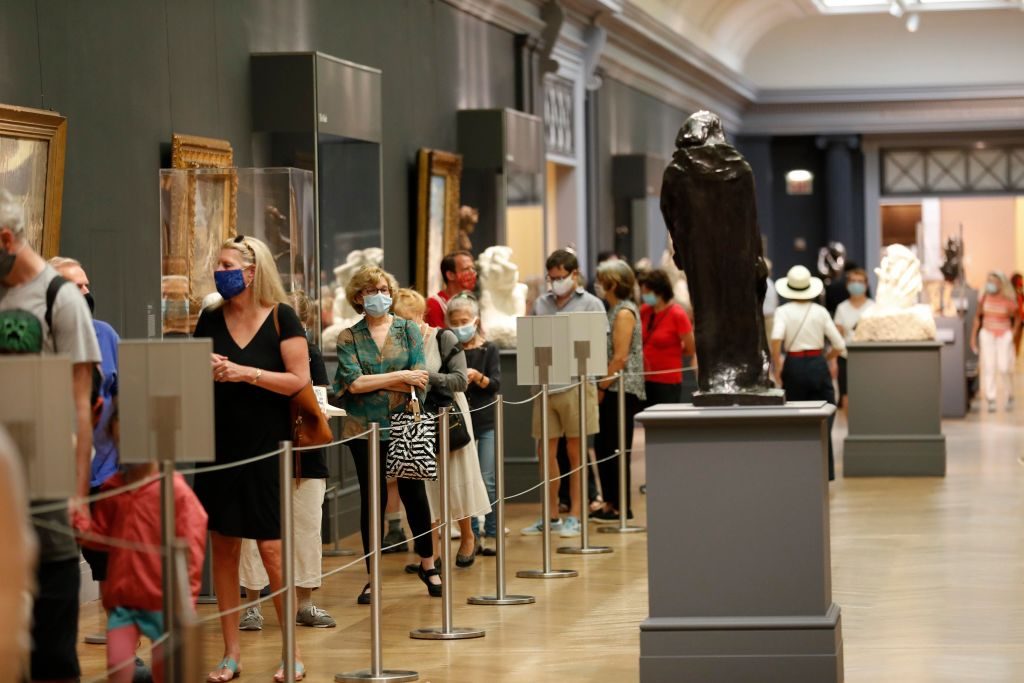
PeopleVisitors in line for the Alice Neel show at the Metropolitan Museum of Art on August 27, 2020. (Photo by Liao Pan/China News Service via Getty Images)
I remember the long, long line of people waiting to get into the Alice Neel show earlier this year. You had limited attendance to maintain social distancing. It was such an eye-opening exhibition, perfectly pitched and a discovery of an incredible, creative life. How was the attendance?
It was our biggest show in terms of the attendance in the past year. I think it was 179,000 people. There was a big rush at the end. It really resonated with the times and with New York audiences. It showed you not only one of the greatest artists of the 20th century, but also the artist as an activist.
Did you have an inkling it would be a blockbuster? And how has the concept of a blockbuster show changed during the pandemic?
I don’t like the term “blockbuster show.” I think that what we are doing is very ambitious shows that ideally reach the widest possible audience. I don’t think you would have labeled [Alice Neel] a blockbuster show, even though it was our most popular show of the year.
We do close to 50 shows a year—some bigger, some smaller. Each of them is an outcome not only of our scholarly work, but also of our perspective on what’s relevant right now, what is important to understand. Our projections of how many people can visit make no difference in regard to whether this is an urgent or important show.
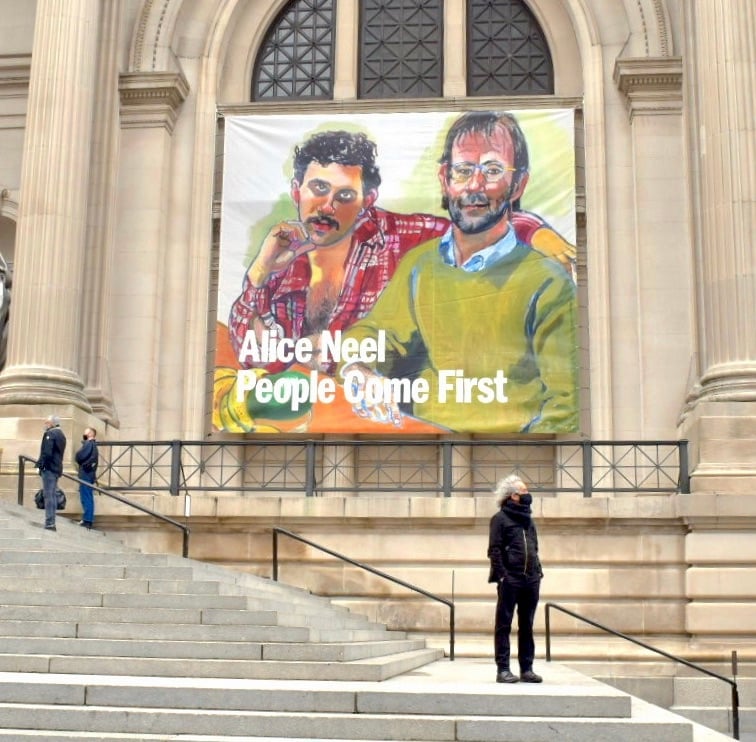
Banner for “Alice Neel: People Come First” outside the Metropolitan Museum. Photo by Ben Davis.
Several prominent curators left the museum this year. Keith Christiansen, chairman of the Department of European Paintings, just retired. Then there’s Helen Evans, a longtime curator of dazzling Byzantine shows, and most recently, “Armenia!” and Doug Eklund, who organized the groundbreaking “Pictures Generation” show in 2009. Is this a generational shift, or house cleaning?
We have about 140 curators, and, more often than not, a lot of them stay at the museum for a long time, which is great. Of course, it’s important for an institution to move people within the institution—up and forward. And basically, that’s what’s happening.
Keith, as you know, did the great Medici show and then retired. He had a long, long career and was planning to retire. And then Doug made a conscious decision that he wants to move on. But I don’t see any of that being connected with any kind of transformation or change. It’s an evolutionary process.

The Met’s Modern and contemporary galleries. From left to right: Amy Sherald, When I let go of what I am, I become what I might be (Self-imagined atlas) (2018); K.G. Subramanyan, Studio Table With Figure I (1965); Kerry James Marshall, Untitled (Studio (2014); Stanley Whitney, Fly the Wild (2017); Center vitrine: Ron Nagle, Watermelon (1983); Contessa (1983); Untitled (1991). Photo courtesy of the Metropolitan Museum of Art.
The Met has an active acquisition program. But it is also planning to deaccession art, taking advantage of the two-year window, through April 2022, during which the Association of Art Museum Directors has permitted members to sell art in order to raise money for collection care as opposed to only for acquisitions. Can you fill me in on the latest about your deaccessioning plans?
I have to say one thing just to avoid any misunderstanding. We are not intending to sell any works to create [acquisition] funds to acquire new [artwork]. We have significant endowment funds that are earmarked just for acquisitions. During the pandemic, when the AAMD loosened the guidelines, it’s useful for any institution to consider—in our case, not only because our collection is so vast, but because even in a year when we might have a significant operational budget deficit, we still have significant funds with which to acquire art through our endowments. So it seems appropriate to use the proceeds of our regular deaccession program to support salaries for collection care staff in this exceptional year. And that’s what we are doing.
The Met is projecting a $150 million revenue shortfall over two years. Are you planning to sell $150 million worth of art?
No, no! The magnitude of our deaccessioning program differs from year to year, but it’s around $10 million. The works we use for deaccessioning are duplicates, multiples, copies of the same thing [we have] in better quality. We have identified a couple of the works.
Can you tell me which works you’ve identified?
No, we will announce that as part of the process. It’s going to be a normal process and normal object selection.
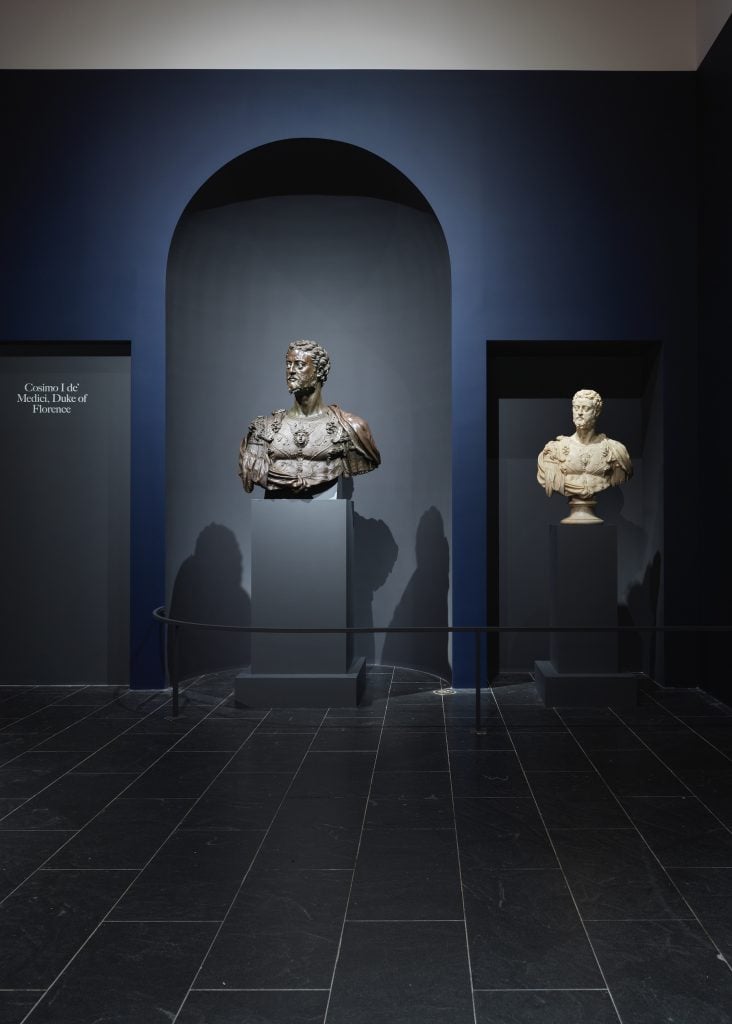
Installation view of The Medici: Portraits and Politics, 1512–1570, on view June 26–October 11, 2021 at The Metropolitan Museum of Art, New York. Photo by Hyla Skopitz, Courtesy of The Met
I heard that one of the people who is advising you on the deaccessioning is Tobias Meyer, a private art dealer and former star auctioneer at Sotheby’s, whose clients include billionaire collectors Ken Griffin and David Geffen.
In every acquisition and deaccessioning, we use the best expertise that we have and we can get. Tobias is not only someone who is engaged with the museum on multiple fronts, but we use his expertise in different ways. He’s on the visiting committee for European sculpture and painting and has been a donor of work, helpful in identifying the works we might want to acquire, and also advising on the works we might consider for deaccessioning.
NFTs have been such a big story this year, in terms of the technology’s impact on the market, art community, and artistic production. Will the Met be minting NFTs anytime soon or adding them to its collection?
It’s an interesting development, but it’s not our role to be the first emergency responder to the newest trends in art and society. We’ll see where that develops, and at some point, I’m sure there will be a work that could be part of the Met’s collection. But currently there’s nothing on the horizon for us. And we are not creating any NFTs.
The underlying blockchain technology is something that will transform a lot of areas: how we do business, how we create authentication records, and probably also provenance, databases, et cetera. So, in that sense, blockchain technology is extremely relevant and important for us.
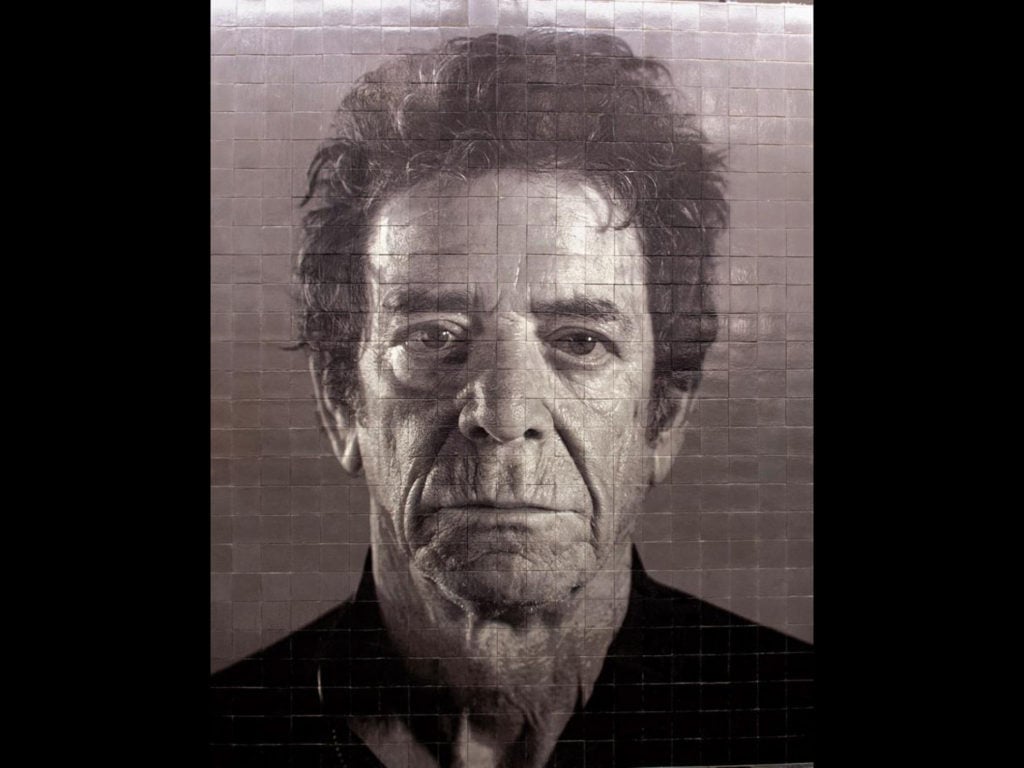
Chuck Close, Lou Reed from his “Subway Portraits” at the 86th stop on the new 2nd Avenue subway line. Courtesy of Governor Cuomo’s office.
Let’s talk about the low-tech stuff, like wall text. Artist Chuck Close died two weeks ago. He spent the final years in the shadow of sexual harassment allegations. The Met owns many of his paintings. None are on view at the moment. Do you plan to show his work again, and will the wall text reflect the accusations?
Our Chuck Close portrait of artist Lucas Samaras has been hanging for the last couple of years [until March]. You do need to make a differentiation between the artwork and the life of an artist. Where these two get completely intertwined, it’s important to acknowledge the complexities.
I don’t want to only talk about Chuck Close, but in general the idea that you can only look at an artist’s work where the life of the artist is impeccable seems absurd. It would be a really complex way to look at it.
We love seeing Caravaggio’s work; it’s so powerful and extreme. On the other hand, of course, he was a convicted murderer and had to flee from [Rome]. So, one has to be very careful. If the artwork came into existence or is part of the allegation or misdeed, then you have a different situation. But if you have a portrait by Chuck Close of Richard Serra then it’s different.
And changing the subject a bit, it is on the other hand also really important that the artwork itself can be disruptive and challenging, even morally challenging. I keep using the example of Pier Paolo Pasolini’s film Salo because it really shook me when I first saw it. It deals with fascism on the level that no other work does. And, of course, Pasolini led a complex life. But I think it’s an absolute masterpiece that needs to be shown.
